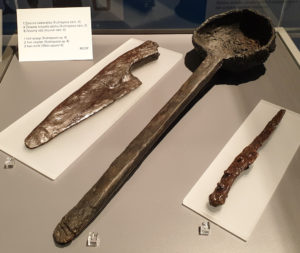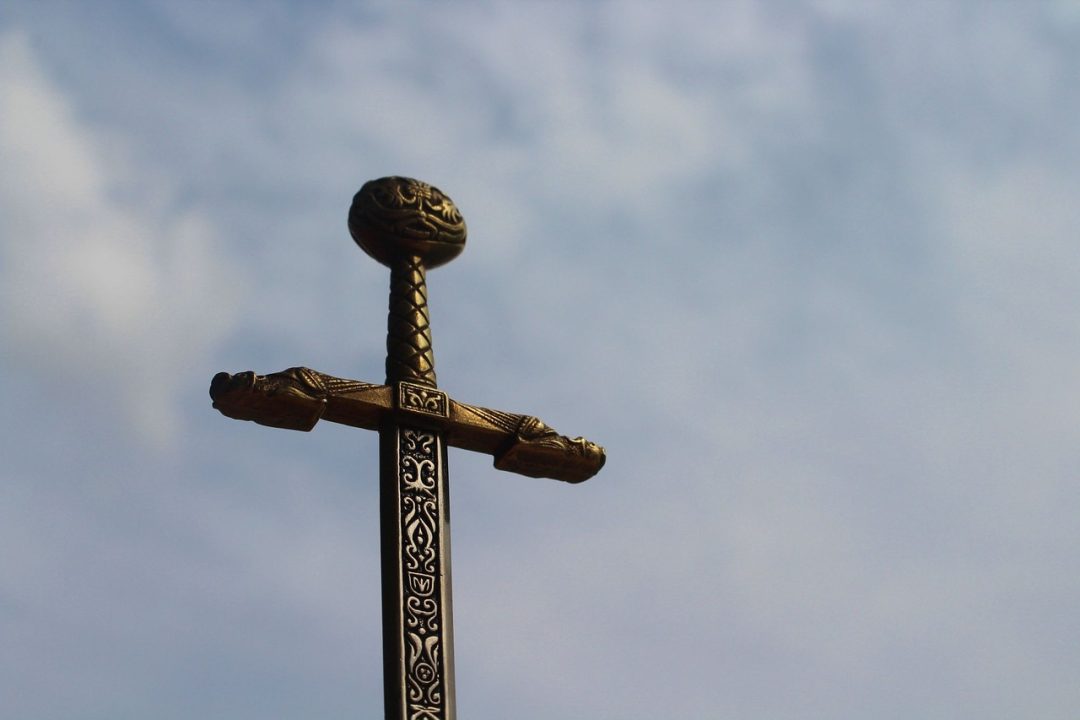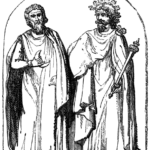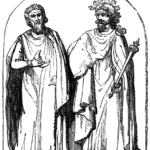Although there are numerous myths associated with carrying a blade; the reasons behind it, in the Celtic faith, are fairly straight forward. This practice is one of the original beliefs and was formed during a time when it was common for anyone who was well off to carry at the minimum a dirk (small, double-sided, fixed blade knife) and usually men would be found also carrying a sword. These items were not only for offense or defense but also a necessary tool for everyday living.
The dirk was used in the preparation of food, for cleaning animals and making everyday items. Men would often carry swords to defend against trouble (or to assist in causing it).
Laws of the time were often created at the whim of the local ruler and enforcement was sporadic. Carrying a blade permitted the accomplishment of everyday activities and assisted every citizen to avoid being taken advantage of.
Celtic blades on the First Rites
Celtic blades are given at the conclusion of the First Rites ceremony to both men and women. Traditionally the blades are a gift from the parents and are hand made and very high quality.
 Today it is not uncommon for a single knife to cost from $200 to $1800, and be kept unused and treasured. A common belief is that after years of use a part of the owner’s spirit becomes attached to and the blade attached to them. For this reason, some people exchange the blades they use on a regular basis, while others will only use one blade for their entire life. It is considered to be bad luck for a blade to be kept totally unused and unblooded; so before placing the knife in storage or leaving it on display a drop of blood is placed on the blade.
Today it is not uncommon for a single knife to cost from $200 to $1800, and be kept unused and treasured. A common belief is that after years of use a part of the owner’s spirit becomes attached to and the blade attached to them. For this reason, some people exchange the blades they use on a regular basis, while others will only use one blade for their entire life. It is considered to be bad luck for a blade to be kept totally unused and unblooded; so before placing the knife in storage or leaving it on display a drop of blood is placed on the blade.
Symbol of Carrying a Blade
The symbolism of carrying a blade of any type is two-fold; it is meant to be a reminder for the wearer and a warning for those around him. The reminder is that they have the responsibility to do what is right and help those who are less able to help themselves. The warning is to let others know that the wearer is willing and able to use force to do so. It is expected that every adult will carry a blade of some type with them at all times when out in public. It is not uncommon for people who are still in school or who’s job does not permit the carrying of an actual blade; to get a small charm or even a tattoo to make up for not being able to carry one with them. The reminder/symbolism is more important than having access to a useful tool.






